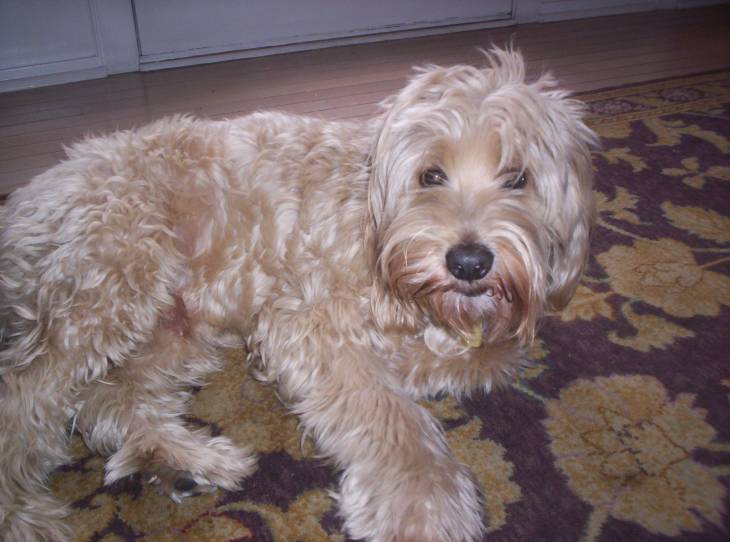A Look at Dogs That Don’t Shed (Clean Living)
It can be tough to keep things tidy with a dog in the house. If you have a pooch that tends to shed, ridding your home of detached dog fur could make for a rough challenge. Fortunately, there are several breeds that are known to keep their fur to themselves.
Is There Such a Thing as a Totally Non-Shedding Dog?
If you’re looking for a dog that will never shed, you won’t find one. The truth is all dogs shed some hair, as it is a natural process for them to replace dead hair with new hair - a process not all that similar to humans. However, some breeds are nonetheless considered non-shedders because they heave behind very little hair.
Understanding Hair Shedding and Allergies
Non-shedding dogs aren’t just attractive to neat freaks – they tend to be the dogs of choice for people that suffer from allergies. Studies show that 1 in 10 people in the United States is allergic to dogs. If you fall in that statistic, you'll want to look into what is known as a hypoallergenic breed.
However, you’ll want to look a little more carefully than you think. Just like there is no such thing as a totally non-shedding dog, there is no such thing as a completely hypoallergenic dog. What’s more, the reason for this doesn’t have to do with the dog hair.
The root of most dog allergies come from dander, which is the dead skin that falls off the dog. As one may expect, breeds with a higher propensity for shedding produce more dander, which means they are more likely make allergies flare.
However, it’s also been shown that a dog’s saliva and urine also have properties that can trigger allergic reactions. Obviously, every dog pees, so it may be a bit tougher for owners to limit interaction with dog urine, particularly in the puppy training stage. However, it may behoove allergic types to look for a hypoallergenic dog that isn’t subject to drooling.
Does Coat Size Matter?
If you’re looking to cut down on allergies or the need to curb the amount of hair that needs to be swept up, you may feel an obvious solution would be to pick up a short-haired breed. After all, if a pooch doesn’t have a massive coat, he won’t be as subject to leave a hairy mess, right?
While this thought process seems logical, it is not accurate. Granted, longhaired breeds with double coats such as Shetland Sheepdogs or Chow Chows will leave a mess. But some of the canine world’s most notorious shedding breeds have short coats, like Pugs or Rat Terriers.
So…What are Some of the Breeds that Shed the Least?
If you’re a dog lover and are truly interested in welcoming a dog into your home, you’re probably not going to let the thought of a little sniffle here and there get in the way. And while allergies or the need to keep a tidy home will steer you from some breeds, there are plenty of other breeds to choose from.
The most popular of these low-shedding breeds is the poodle. While the fact that they don’t leave a whole lot of hair behind gives them great appeal, their notable intelligence and playful disposition also make them an attractive breed. Their wide size range is also a bonus, as they also come in standard, miniature, and toy.
Another dog with “across the board” size appeal is the schnauzer. Equipped with bushy eyebrows and a pronounced mustache, this particular breed comes in three sizes: standard, miniature, and giant. Regardless of size, the breed’s legendary brainpower is alluring for those who want a smart dog.
If you want a larger dog, the Italian greyhound may be the dog of your dreams. Long, sleek, and graceful, this thinned-coat breed could perpetuate the (inaccurate) concept of short-haired dogs not shedding. Of course, that thin coat also means a thin layer of protection for the elements, so you’d be wise to invest in doggie sweaters for winter.
A great example of a longhaired dog that lacks a penchant for high-volume shedding is the Maltese. You will need to apply a brush to this lapdog’s long white coat to keep it looking silky and luxurious. However, you can take comfort in knowing that the hair you brush will for the most part stay intact.
A Yorkshire terrier is another longhaired breed that’s ideal for owners that don’t want a dog that’s a shedding fiend. Like the Maltese, this small breed does require routine grooming in order to maintain its distinctive look. However, if you’re bringing a Yorkie into your home, taking care of his beautiful coat is half the fun.
It makes sense that the Yorkie would have a spot on a list of low-shedding dogs. There are plenty of dogs within the terrier group that won’t leave a hairy mess in your home. The wire fox terrier, soft coated wheaten terrier, Bedlington terrier, and Kerry blue terrier are just some of the terrier breeds known for to not make a mess.
And if you're looking to own a low-shedding dog that's eye-catching, you really can't go wrong with a Chinese crested – specifically, the hairless variety. This particular version of the breed looks almost punk, with his scant thatches of lower-leg fir and wispy mane. But even if you get the "powder puff" version, you won't see much shed hair.
What About Mixed Breeds?


There is a certain nobility to bringing a mixed breed into your abode. After all, you may be able to find your fair share of “mutts” when you go to the local animal shelter. Considering that some of these dogs may be living on borrowed time, you are doing a really good thing by taking one home.
With that being said, the shedding tendencies of a mixed breed is a mixed bag that is ripe for debate. Some people insist that mixed breeds tend to be average to heavy shedders. On the other hand, some will tell you that many mixed breeds don’t shed much at all.
The reality of mixed breed shedding falls somewhere in the middle. It comes down to a matter of genetics in many cases. Dogs whose roots stem from low-shedding, hypoallergenic breeds will likely be low-shedders whereas mixed breeds that come from high-volume shedders will likely carry on the messy tradition.
If you are interested in the uniqueness of a mixed breed but are curious about their shedding tendencies, you may want to research the dog’s lineage as much as you possibly can. Doing so could prevent you from bringing home a dog that will cause you more problems than you anticipated.
You’re Not Off the Hair-Maintenance Hook!
There tends to be one pretty important trade-off when it comes to low-shedding dogs. They may not leave a lot of hair all over the place, but most of them are high-maintenance when it comes to their grooming needs.
Because these coats don’t dump a lot of their hair via shedding, they tend to be more subject to hair-related issues that can make their fur a bit nasty if left untouched, such as mats and tangles. Ultimately, this could lead to an unhealthy coat that could leave your four-legged friend looking less than optimal.
Obviously, this issue is a lot more prevalent in certain breeds than with others. If you have a Maltese or a Puli, then grooming, stripping, trimming, and other such activities are going to be part of your daily life. Conversely, the hairless version of a Chinese crested is going to let you off pretty easily.
If you have allergies, it's important that you keep on top of grooming your low-shedding dog, not only for his sake but also for yours. A dog's hair has a tendency to pick up pollen, dust, and other things that may trigger non-canine related allergies. Routine grooming practices will help to keep such bits of nastiness to a minimum.
Don’t Just Settle for a Dog Because He’s a Low-Shedder!
As with a lot of other aspects when it comes to owning a dog, you shouldn’t just hyper-focus on whether or not your potential four-legged friend will leave behind his hair on your sofa. It’s important that you look at the dog breed in totality to ensure he’s a proper fit for your life.
For instance, an Italian Greyhound won't shed a bunch, but he'll need a whole lot of exercise to nourish his overall well-being. A Maltese keeps things clean but is a notoriously tough breed to train. In other words, there are pretty big metrics that you need to be keen on that may actually take precedent over shedding.
However, it’s worth taking the time to ensure the dog you’re bringing home will enrich your life the way you want it to be enriched. And honestly, there really isn’t a better feeling that you can have when you find a dog that is the perfect fit for you and your life.

